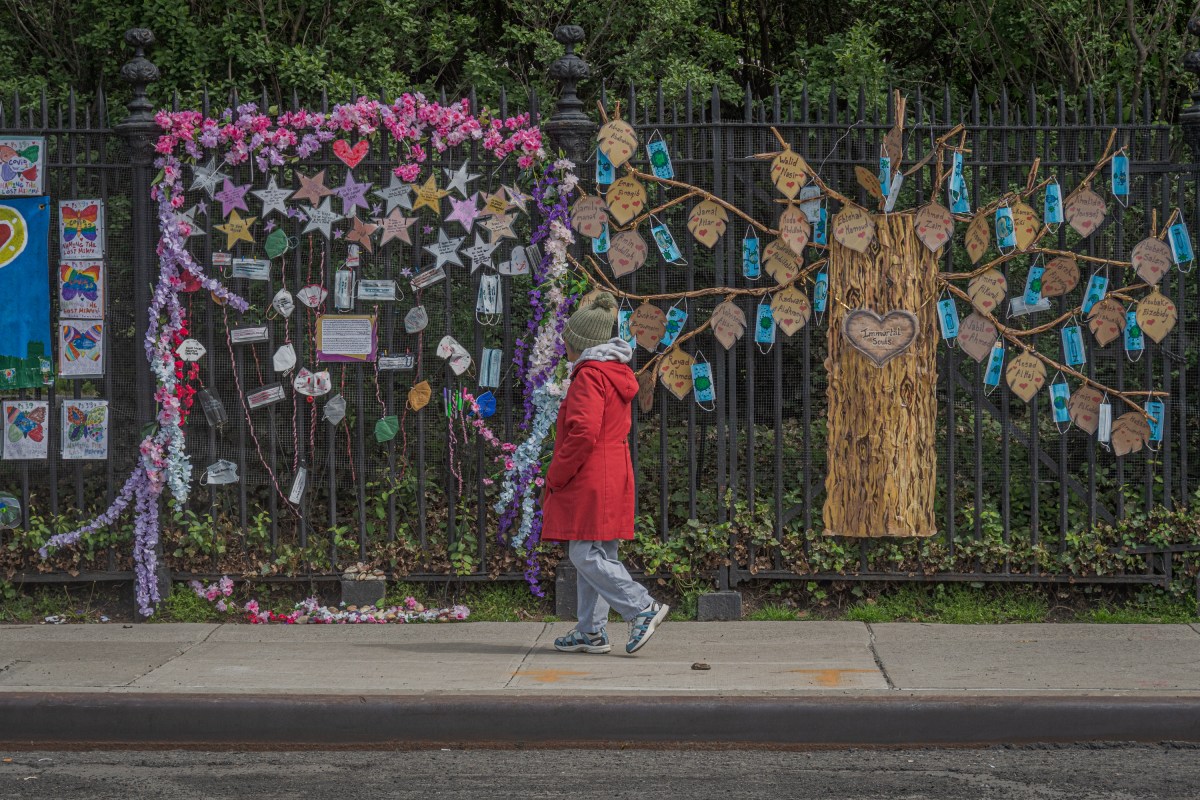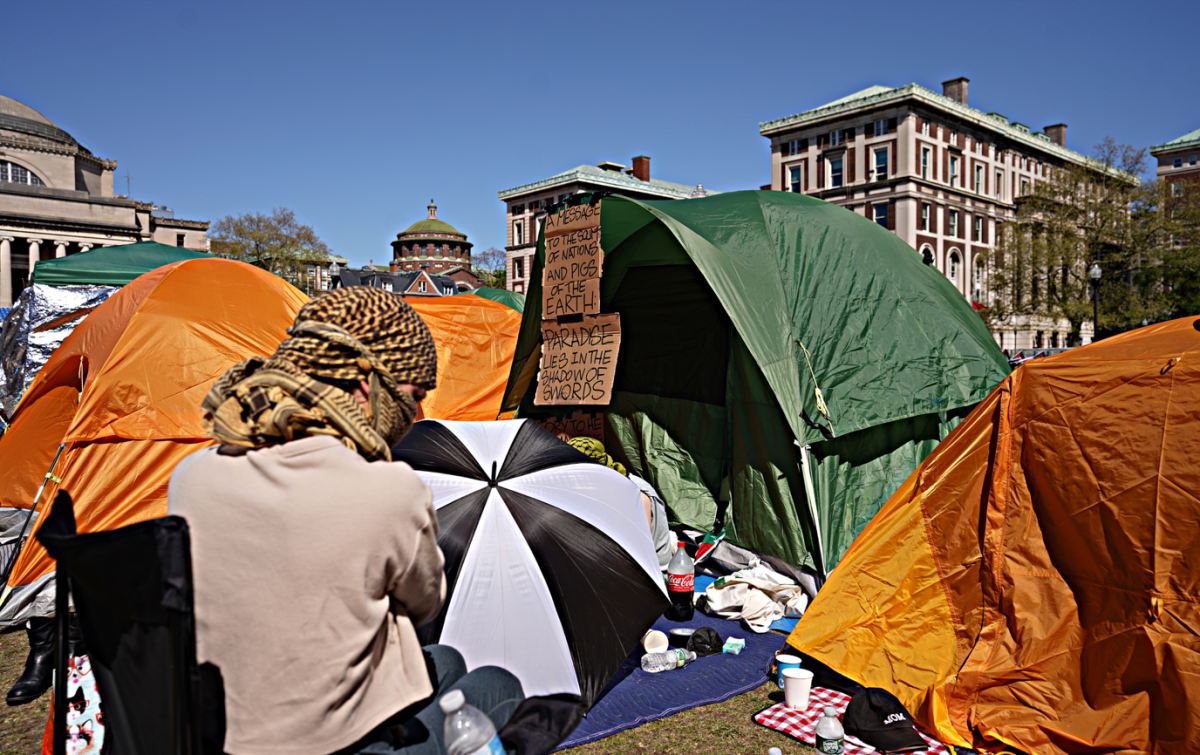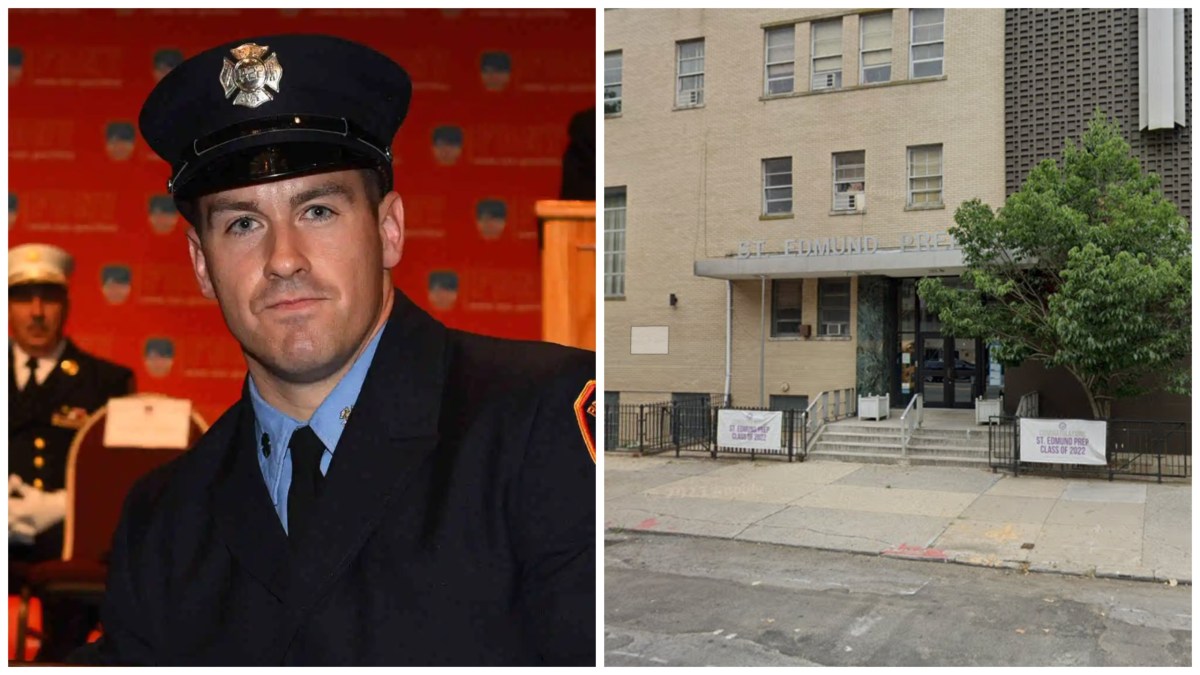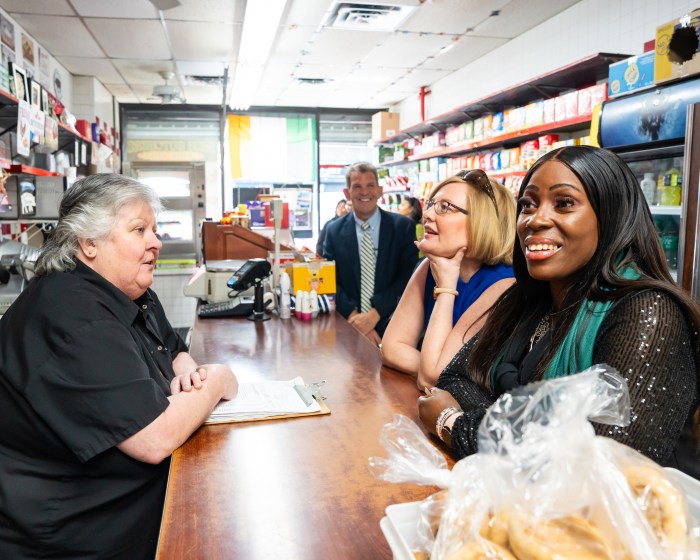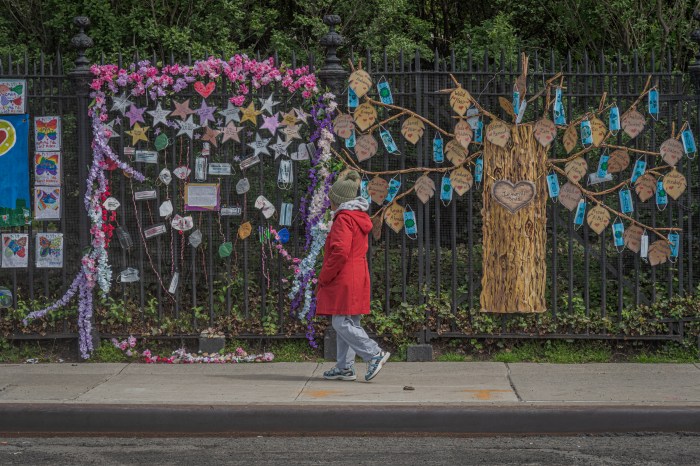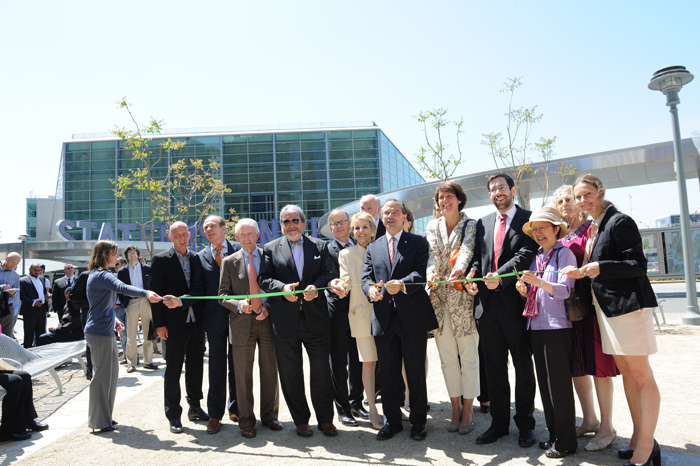
BY Terese Loeb Kreuzer | With a pavilion shaped like the blades of a windmill, flowerbeds planted with tulips and a bicycle lane connecting the east and west sides of Lower Manhattan, Peter Minuit Plaza officially opened on Thursday, May 12.
“The whole area feels Dutch!” said Margriet Leemhuis, Ambassador for International Cultural Cooperation of the Netherlands Ministry of Foreign Affairs, at the ribbon-cutting ceremony.
The plaza was named for the Director General of New Netherlands who, in 1626, allegedly bought the island of Manhattan for the Dutch West India Co. from the Lenape Indians for the equivalent of $24 in trade goods. The 1.3 acre park is centered by the New Amsterdam Plein and Pavilion, a gift to the City of New York from the Kingdom of the Netherlands on the occasion of the 400th anniversary of Henry Hudson’s arrival in what is now New York harbor aboard a Dutch ship, the Half Moon.
New York City Parks Commissioner Adrian Benepe, master of ceremonies for the ribbon cutting, described the plein and pavilion as “an outdoor living room” with seating that would accommodate spontaneous and scheduled public activities. Merchants Market is serving regional, organic food in part of the pavilion. The Alliance for Downtown New York has a visitor information booth on one of its other flanks. An interactive map on one surface of the building shows what there is to do and see downtown and also shows visitors where restaurants are located.
Dutch architect Ben van Berkel, who co-founded UNStudio, developed the concept and design for the pavilion. It is covered with a white, Corian surface. Every night at midnight, it glows with an array of colors in tribute to Peter Minuit – whose last name means “midnight” in French.
Dutch landscape architect Piet Oudolf created the color palette for the planting beds. He also created the Bosque gardens and the Gardens of Remembrance in the Battery. Gail Wittwer-Laird of the N.Y.C. Dept. of Parks was in charge of the landscaping.
The plein, which surrounds the pavilion, is embedded with stones quarried in upstate New York on which are engraved quotations describing the Dutch colony of New Amsterdam from Russell Shorto’s book, “The Island at the Center of the World.”A three-dimensional, carved, bronze map of the Castello plan for New Amsterdam shows what the city looked like in 1660. The detailed representation depicts New Amsterdam’s streets and houses, its canal and windmill, its gardens and its fort. It was created by Simon Verity and architect Martha Finney. The original map once belonged to Cosimo III de Medici and was named for the Medici palace in which it was housed.
Benepe said that the gardens and pavilion “remind us of four centuries of Dutch-American friendship and a mutual passion for the values of innovation, creativity, diversity, openness, entrepreneurship and progress – values that were so important to the development of this city.’
In addition to the gift of $2.3 million from the Kingdom of the Netherlands for the plein and pavilion, it took $22.1 million from the Metropolitan Transportation Authority and the New York City Dept. of Transportation to build Peter Minuit Plaza. Another $1.4 million came from the Dept. of Homeland Security.
Many forms of transportation converge at or near Peter Minuit Plaza: the Staten Island Ferry Terminal, which serves 65,000 people a day, the 1 and the R subway lines, which serve 30,000 people daily, the M15 bus line, with 54,000 riders a day, a taxi stand, and the bicycle path. “I think this is the most multi-modal acre in America,” said N.Y.C. Department of Transportation Commissioner Janette Sadik-Khan at the ribbon cutting.
Benepe lauded “the amazing partnership that has created a first of its kind, intermodal transit hub and open space at the tip of Lower Manhattan where the Dutch first came and set up shop in 1624.”
He especially hailed Warrie Price, president of The Battery Conservancy, as the woman who made it all happen. She was the one who had the idea and got the many city, state and federal agencies and private benefactors to contribute to it.
Price, in turn, praised the continuity of city leadership that had enabled this dream and plan to survive. She has worked with Benepe for 16 years, she said, first when he was borough commissioner and then when he was commissioner of parks. The continuity, she said, “is the real crux of how you keep alive the incredible purpose of what you want to do in public space.
“Building this space is only our first step,” she continued. “Our Dutch benefactors didn’t just give a building. They gave us a future.”










